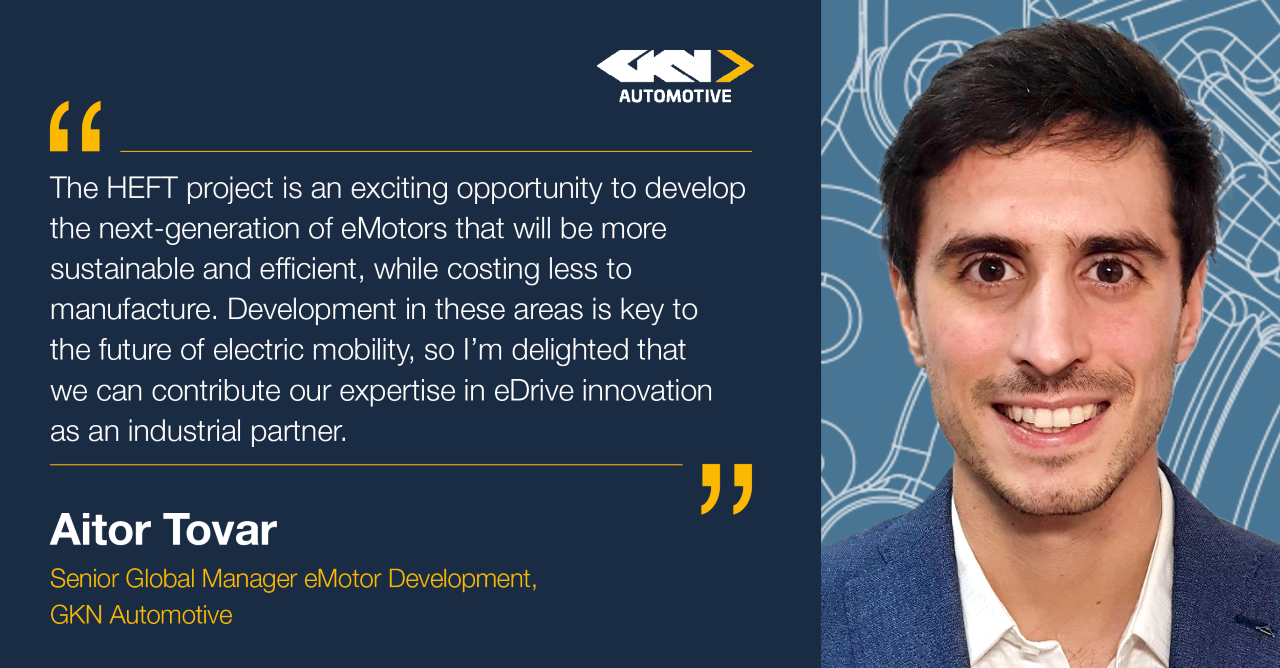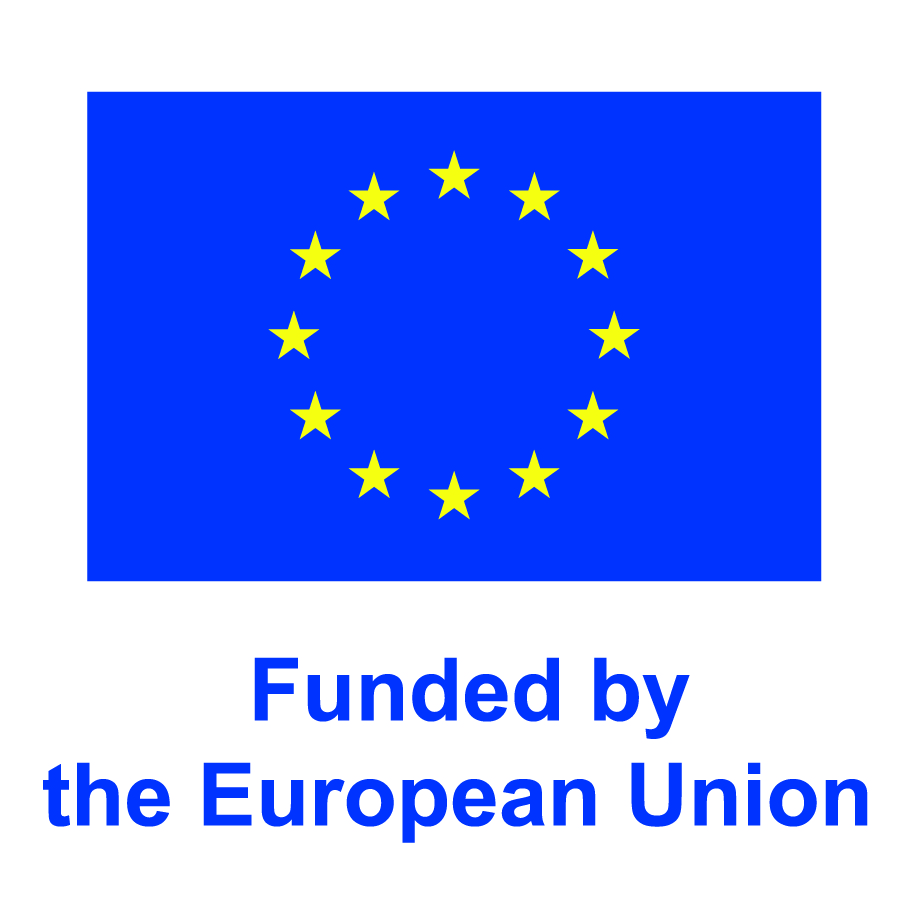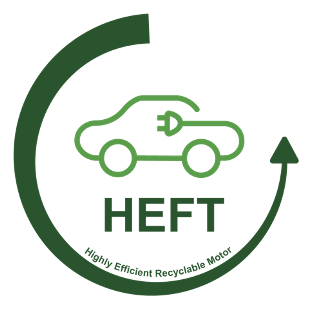- New European R&D programme launched to develop a lower cost, more efficient and power dense permanent magnet eMotor for electric vehicles (EVs)
- A consortium of eight European partners is led by Mondragon University and includes GKN Automotive
- A circular strategy for rare earth critical raw materials in the eMotor will be implemented through design and material innovation
GKN Automotive, the global leader in drive systems, has joined a new €4m European R&D project launched by Mondragon University. The project aims to develop lower cost, more efficient permanent magnet eMotors with increased power density for mass produced next-generation electric vehicles (EVs).
The novel concept of a low cost, high power density and highly efficient recyclable motor for next-generation mass produced electric vehicles includes a set of innovations to the eMotor configuration1 and materials2 that will be validated on two variants of the eMotor. The innovations will allow magnets in the eMotor to be smaller in size, contain less rare earth material, and be eligible for reuse and recycling. Compared to two main reference eMotors already on the market, the final eMotor will offer up to a 20% reduction in power losses, a 28% reduction in production costs, and a reduction in material use of up to 66%.
A long-term circular strategy for rare earth critical raw materials (CRM) will be implemented, targeting a reduction in the use of two key rare earth materials (neodymium and dysprosium) of up to 80% and recycling more than 80% of any rare earth material used. This is intended to conserve resources and create increased resilience in the European supply chain.
The project, named HEFT and led by Mondragon University, Spain, is funded by the European Commission and includes a total of eight partners from Belgium, Italy, Slovenia, Spain and the UK. GKN Automotive joins as a key industrial partner, assuming responsibility for manufacturing and assembly, and ensuring the final eMotor design meets industry needs and requirements. GKN Automotive is a supplier to more than 90% of the world’s OEMs and has more than 20 years of eDrive experience. This means GKN Automotive is uniquely placed to provide critical knowledge on the required specifications of a next-generation eMotor. Other partners in the consortium are Magneti Ljubljana, Vyncolit, Ikerlan, the University of Nottingham, the University of Bologna and KU Leuven.

Aitor Tovar, Senior Global Manager eMotor Development at GKN Automotive, comments: “The HEFT project is an exciting opportunity to develop the next-generation of eMotors that will be more sustainable and efficient, while costing less to manufacture. I believe development in these areas is key to the future of electric mobility so I’m delighted that we can contribute our expertise in eDrive innovation as an industrial partner, helping to meet an industry need.
“Minimising the environmental impact of manufacturing, particularly through a reduction in the use of rare earth critical raw materials, is an essential consideration in the development of future products, so the implementation of a circular economy strategy is another key motivation in our participation in this project.”
Javier Poza, HEFT Project Coordinator and Head of Electric Machines and Drives research group at Mondragon University, comments: “The HEFT project will allow European companies, research institutions and universities to successfully position themselves in the market, improving their capabilities and know-how in highly efficient and cost-effective eMotor design and manufacturing. It will also promote new job opportunities linked to magnet recycling and circular economy for rare earth-based magnets.”
HEFT plans to organise OEM workshops to increase adoption of its solutions. It will also work with policymakers to promote regulations that will help maintain the leadership of EU companies while increasing their competitiveness and job opportunities linked to the new circular business models.
HEFT will also be aligned with the European Raw Materials Alliance (ERMA) action plan towards a circular economy market of rare earth permanent magnets. HEFT will be supported by an advisory board, including companies, institutions and alliances, to ensure the competitiveness and success of the project results.
All the work from GKN Automotive will be carried out from its facility in Zumaia, Spain.
Visit the HEFT website here: www.heftproject.org
- ENDS -


1 This includes innovations in: rotor and stator direct cooling, advanced insulation for high voltage, multibarrier rotor topology, wave windings.
2 This includes innovations in: advanced GBD magnets, epoxy for magnet fixation, composite for motor housing and insulation resin.
Notes to Editors
ABOUT GKN AUTOMOTIVE
GKN Automotive is a world-leading global automotive technology company at the forefront of innovation. Its origins date back to 1759 and for the last 70 years it has been putting key technologies into series production. It is the trusted partner for most of the world’s automotive companies, specialising in developing, building, and supplying market-leading drive systems and advanced ePowertrain technologies. It is the global leader in sideshafts, with eight out of ten of the world’s best-selling cars outside China using its sideshaft technology. GKN Automotive’s first eDrive system was fitted to a production car over 20 years ago; today, over two million electrified vehicles worldwide are powered by this technology.
For further information, please contact:
Corrie Raine
External Communications Manager
GKN Automotive Email: corrie.raine@gknautomotive.com
Mobile: 07816 201 296